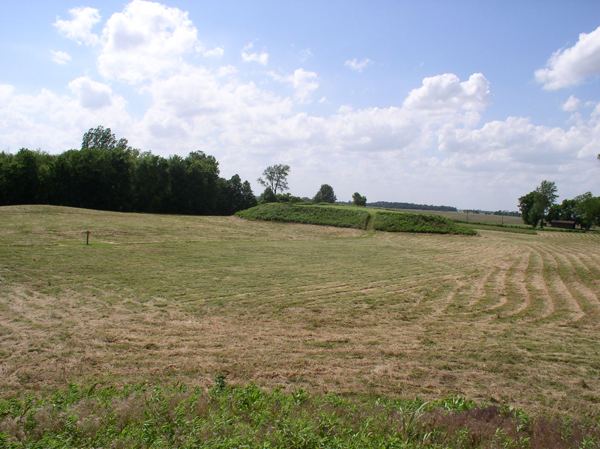Area 47 ha Added to NRHP 29 July 1969 | NRHP Reference # 69000113 Phone +1 573-748-5340 | |
 | ||
Address Co Rd 502, East Prairie, MO 63845, USA Similar Sugar Loaf Mound, Larson Site, Velda Mound, Nacoochee Mound, Millstone Bluff | ||
Towosahgy State Historic Site (23MI2), also known as "Beckwith's Fort," is a large Mississippian earthwork mound site with a Woodland period Baytown culture component located in Mississippi County, Missouri. It is believed to have been inhabited from c. 400-1350. The site is maintained by the Missouri Department of Natural Resources as a state historic site. The name Towosahgy is an Osage word which means "old town." It is not known if members of the historic Osage, who dominated a large area of present-day Missouri at the beginning of encounter with European colonizers, occupied the site. The site includes the Beckwith's Fort Archeological Site, added to the National Register of Historic Places in 1969.
History of Towosahgy
The earliest portion of Towosahgy State Historic Site is in the southern half, where a Late Woodland village once stood. Wilkie dates this component to about 400 to 700.
Later the site was fortified and built up as a Mississippian site with seven earthwork mounds, most surrounding a central plaza. During this time, the site was surrounded by a palisade wall of vertical logs and a moat. Like other Mississippian mound centers, Towosahgy also had a borrow pit, where earth was removed to create the mounds. The largest remaining mound is Mound 2, also known as the "temple mound." Excavations on this part of the site were conducted in 1989 by James Price. The site was abandoned during the late fourteenth century for unknown reasons, as were many similar Mississippian sites in the region.
Ceramics from the site represent typical pottery found in the Missouri Bootheel region. Sherds from the Woodland occupation are typically grog tempered. The later Mississippian pottery is shell tempered. Type varieties identified include Baytown Plain and Mulberry Creek Cordmarked. Mississippian ceramics were also both plain and decorated. Punctuated, incised, fabric impressed, and red, black, and brown painted/slipped sherds, typical decorating methods, are all present. A large collection of ceramic vessels from the site are part of the Beckwith Collection displayed at the Rosemary Berkel and Harry L. Crisp II Museum at Southeast Missouri State University.
